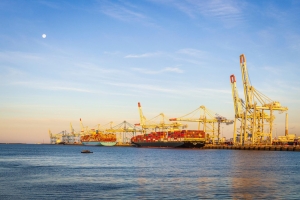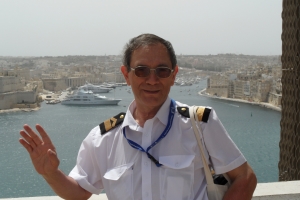The captain will sail to Paris with the support of artificial intelligence

 By Marek Grzybowski
By Marek Grzybowski
HAROPA PORT, i.e. the ports in Le Havre, Rouen and Paris, will introduce advanced IT systems into the navigation system leading to the terminals in Paris. This will improve navigational safety on approaches to ports, in the ports themselves, and especially on the Seine. Maybe it is worth considering introducing such a system in the ports of the Bay of Gdańsk and Szczecin-Świnoujście?
HAROPA PORT has recently been working on a program to introduce IT innovations using satellite and 5G technologies. The work is carried out as part of the “intelligent navigation channel” project, which will use the latest AI technologies. The primary goal is to improve navigation on the Seine and prepare for navigation in the near future.
The Port Authority of Rouen, together with Pilotage de la Seine, has started the implementation of three projects. They mainly focus on the design of future navigation on the English Channel and on navigation in Le Havre, Rouen and Paris.
– The projects include building systems to forecast and control changes in water levels and flows on the Seine, automated ship mooring, and modeling of water levels – informs HAROPA PORT.
Artificial intelligence on the Seine
Artificial intelligence will be used to predict changes in water levels and tides along coasts and quays. This is intended to enable port administrations, terminal managers and port customers to optimize the decision-making process. This will shorten the waiting time for a free berth and more precisely determine the best time to moor the ship.
An IT system supported by satellite observations will enable the integration of meteorological forecasts and oceanographic data with historical information. The use of AI algorithms will allow us to predict changes in the water level of the Seine. The port is currently testing the accuracy level of this solution.
HAROPA PORT intends to base the mooring of ships on the use of sensors. This is to ensure optimization of ship mooring. The computer-processed information is intended to increase navigation safety in the port of Rouen during high tides. The idea is to minimize the risk of ships breaking mooring lines.
Modeling of low water levels will be important in HAROPA ports. The project used 2D modeling. It will be particularly important to monitor low water levels in the Caudebec-en-Caux region to investigate the impact of bank geometry on low water levels.
Investments in superstructure and 5G
The investment program of the Port of Le Havre is an integral part of the €900 million investment master plan announced by Til MSC. It includes the modernization of the port terminals in Le Havre.
The aim is to triple the terminal’s capacity to accommodate and handle the largest ships currently in service and those to be built in the future.
– From the fourth quarter of 2024, the installation of 9 electric mega cranes ordered in April last year as part of the first tranche of the investment will begin. A new order for twelve “straddle carriers” is also being considered, informs the Le Havre port authority.
HAROPA PORT is working on implementing the 5G “water online” system. Its purpose is to provide real-time information on navigation conditions and the situation in ports and on the Seine. The ship’s captain obtains, among others: water level information, detailed information about navigation conditions, as well as water temperature, wave height and more.
The goal is to increase the efficiency of dredging works
Their goal is to increase the efficiency of dredging works. But above all, improving navigation conditions for ships entering ports and operating on the Seine.
The investments carried out by TiL MSC, combined with the “chatière” project, the development of rail transport and the connection of ships to the electric quay, are part of the project of modernizing the logistic axis of the Seine. This is part of the strategy for stronger integration of HAROPA PORT into the global logistics network.
Port investments implemented and planned in Poland are therefore consistent with the general trends in port modernization. As can be seen from the investment activity of ports operating along the Seine, the expansion of infrastructure and replacement of the superstructure is supported by the introduction of modern IT systems, the use of satellite technologies and 5G.
Activities are carried out comprehensively in several ports and logistic connections to Paris. This is a lesson for Polish ports that they need to act comprehensively and on the entire front. Only then can Polish ports maintain an attractive offer for customers and gain a competitive advantage on the global maritime transport market.
Photo: HAROPA PORT
